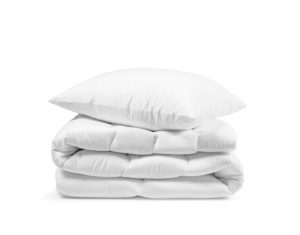Ensuring a safe and welcoming home is crucial for individuals with allergies and asthma. Creating a haven at home is crucial for finding comfort and reducing exposure to potential triggers that could worsen illnesses.
This article will discuss strategies for creating a home environment that helps treat allergies and asthma. By implementing these suggestions, individuals can enhance their overall health and alleviate symptoms of illnesses.
Improving indoor air quality
To create an allergy and asthma-friendly home environment, one of the primary considerations is improving indoor air quality. Maintaining clean and fresh indoor air is vital for individuals with respiratory conditions, and partnering with an experienced air conditioning company in Kent can prove to be valuable. Work with air conditioning professionals to take the necessary steps to improve indoor air quality.
 For proper ventilation, open windows when weather permits and use exhaust fans in kitchens and bathrooms. This helps remove excess moisture and airborne pollutants. Consulting experts are recommended for the installation of air purifiers with HEPA filters. These filters effectively capture allergens and irritants in the air. Place these purifiers strategically in the rooms you frequent the most, like the bedroom and living areas.
For proper ventilation, open windows when weather permits and use exhaust fans in kitchens and bathrooms. This helps remove excess moisture and airborne pollutants. Consulting experts are recommended for the installation of air purifiers with HEPA filters. These filters effectively capture allergens and irritants in the air. Place these purifiers strategically in the rooms you frequent the most, like the bedroom and living areas.
Monitoring humidity levels in your home is crucial because high humidity can promote mould and mildew growth. Furthermore, professionals can guide in selecting and maintaining dehumidifiers in moist environments. They can also promptly address leaks to maintain optimal humidity levels between 30% and 50%. To improve your living space and alleviate allergies and asthma, collaborate with experts to achieve the highest indoor air quality standards.
Minimising indoor allergens
 Minimising the presence of indoor allergens is another crucial aspect of creating an allergy and asthma-friendly home environment. Dust mites, pet dander, and mould are common culprits that can trigger reactions and worsen symptoms. Regular cleaning practices are key to reducing allergens in your home. Use a damp cloth or mop for cleaning to trap allergens instead of dispersing them into the air. Vacuum carpets, rugs, and upholstery with a HEPA filter vacuum cleaner to effectively capture microscopic particles. Additionally, consider encasing mattresses, pillows, and bedding in allergen-proof covers to prevent dust mites from colonising. Weekly washing of bed linens in hot water can also help eliminate any remaining dust mites. If you have pets, it’s best to designate pet-free zones and bathe your pets regularly to reduce pet dander.
Minimising the presence of indoor allergens is another crucial aspect of creating an allergy and asthma-friendly home environment. Dust mites, pet dander, and mould are common culprits that can trigger reactions and worsen symptoms. Regular cleaning practices are key to reducing allergens in your home. Use a damp cloth or mop for cleaning to trap allergens instead of dispersing them into the air. Vacuum carpets, rugs, and upholstery with a HEPA filter vacuum cleaner to effectively capture microscopic particles. Additionally, consider encasing mattresses, pillows, and bedding in allergen-proof covers to prevent dust mites from colonising. Weekly washing of bed linens in hot water can also help eliminate any remaining dust mites. If you have pets, it’s best to designate pet-free zones and bathe your pets regularly to reduce pet dander.
Smart home design choices
Making thoughtful design choices in your home can contribute to minimising allergens and creating an asthma-friendly environment. When selecting flooring materials, opt for hard surfaces like hardwood, tile, or laminate flooring. These options are easier to clean and less likely to harbour allergens than carpets. If you prefer the warmth and softness of carpets, choose low-pile ones and vacuum them regularly. Additionally, consider using washable window coverings like blinds or shades instead of heavy fabric curtains that can trap allergens. Regularly clean these window treatments to prevent the accumulation of dust and allergens.
Creating an allergy and asthma-friendly home environment is crucial for individuals seeking relief from their symptoms and promoting overall well-being. By improving indoor air quality, minimising indoor allergens, and making smart design choices, you can significantly reduce triggers and create a haven for those with allergies and asthma. Implement these strategies in your home to enhance comfort, promote better health, and breathe easier in your own space.





